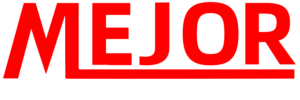Manufacturing
Mejor is a high-tech instrument manufacturer integrated with R&D, production and sales.

1.Design and Development
Based on market demand, application scenarios (such as liquids, gases, steam, etc.), and technical standards, design the structure of flow meters, select sensors (such as electromagnetic, vortex street, turbine, etc.), and develop circuit systems.
Use CAD, CAE and other software for 3D modeling and simulation analysis to verify the fluid dynamics performance, accuracy and stability of the product.
Complete prototype design, develop production process plan and quality inspection standards.
2.Component Processing and Manufacturing
For mechanical components that require customization, such as flowmeter housings, impellers, and measuring pipe sections, precision machining is carried out using equipment such as lathes, milling machines, and grinders to ensure dimensional tolerances and surface smoothness.
Assemble and calibrate sensor components (such as electromagnetic coils and piezoelectric crystals) to ensure the accuracy of signal acquisition.
Perform soldering (SMT or plug-in) and aging testing on circuit boards to screen qualified circuit modules.


3.Assembly and Debugging
Assemble mechanical components (housing, impeller, etc.) with electrical components (sensors, circuit boards, display screens) to ensure that each component is securely connected and positioned accurately.
Preliminary debugging of the assembled flowmeter, including circuit connection testing, software program burning (such as flow calculation algorithms), display function testing, etc.
Special debugging is carried out for different types of flow meters, such as electrode insulation testing for electromagnetic flow meters and frequency signal calibration for vortex flow meters.
4.Performance Calibration and Testing
On standard flow calibration devices (such as standard meter method, volumetric method, mass method device), different flow rates of media (water, air, oil, etc. are selected according to the type of flowmeter) are introduced for accuracy calibration, error values are recorded and parameters are adjusted to ensure compliance with accuracy level requirements (such as 0.5 level, 1 level).
Conduct environmental adaptability tests, such as stability tests under high temperature, low temperature, humidity, vibration, electromagnetic interference, and other working conditions.
Conduct long-term operational testing (aging test) to verify the durability and reliability of the flowmeter.


5.Appearance and packaging
Clean, spray paint (metal casing) or polish (plastic casing) the surface of the flowmeter, and check for defects such as scratches and deformations on the appearance.
Install identification labels that indicate information such as model, specifications, precision level, factory number, production date, etc.
According to the packaging standards, put the qualified flowmeter into the packaging box, equipped with instructions, certificates of conformity, accessories (such as flanges, sealing rings, cables), etc.
6.Factory Inspection and Warehousing
The quality inspection department conducts final spot checks on the finished products to verify whether the calibration data, appearance, packaging, etc. meet the factory standards. Unqualified products are returned for repair.
Qualified products are entered into the inventory system, classified for storage, and waiting for shipment.

*We respect your confidentiality and all information are protected.

